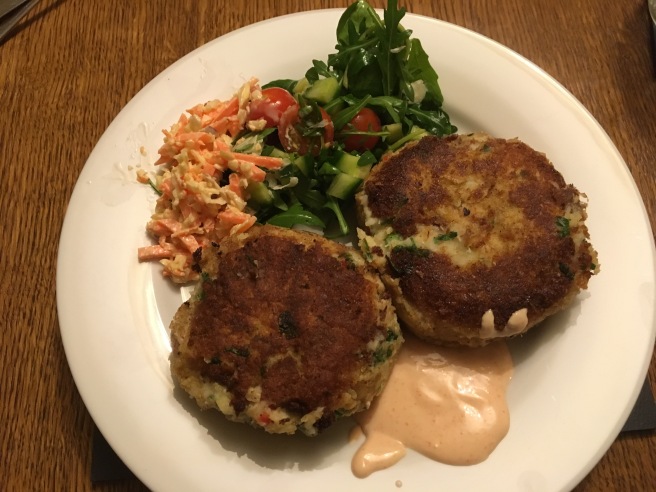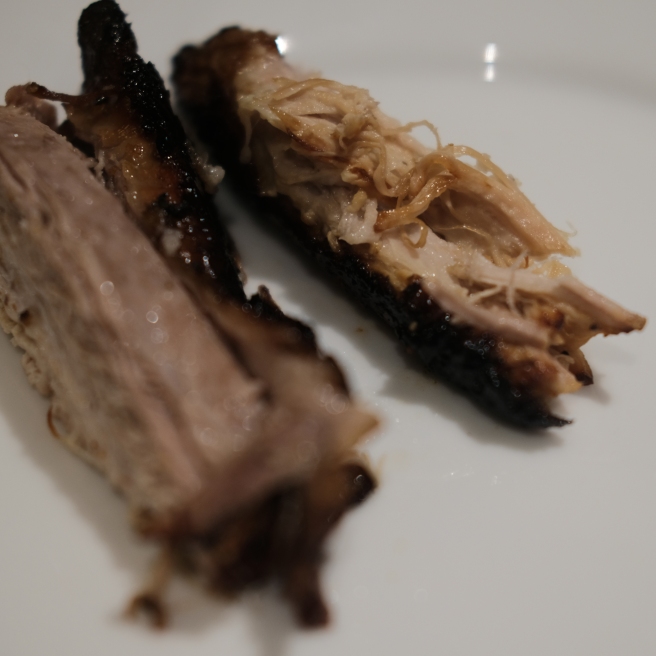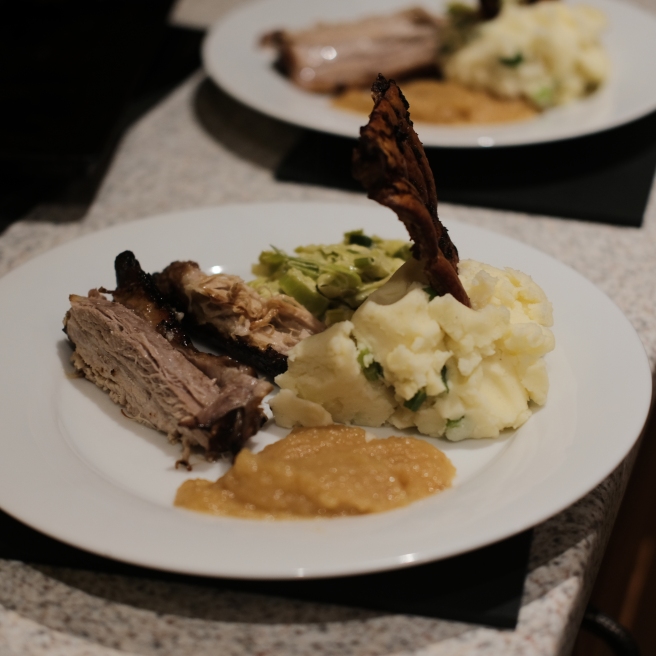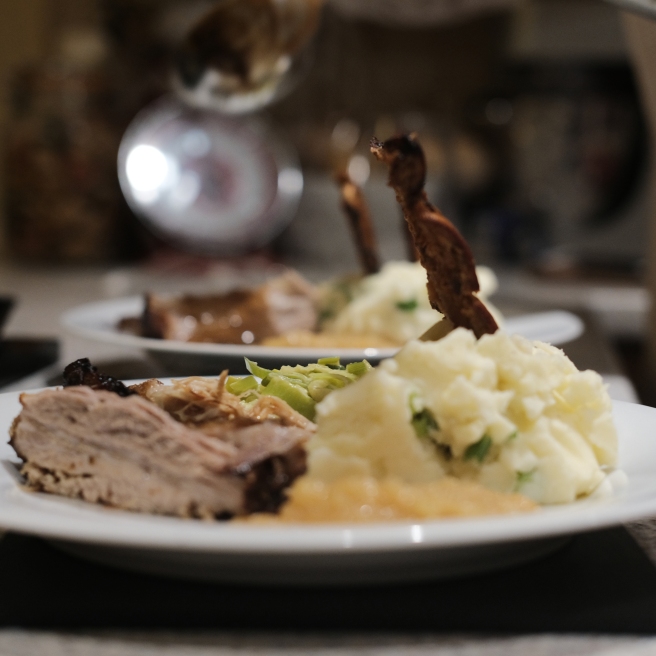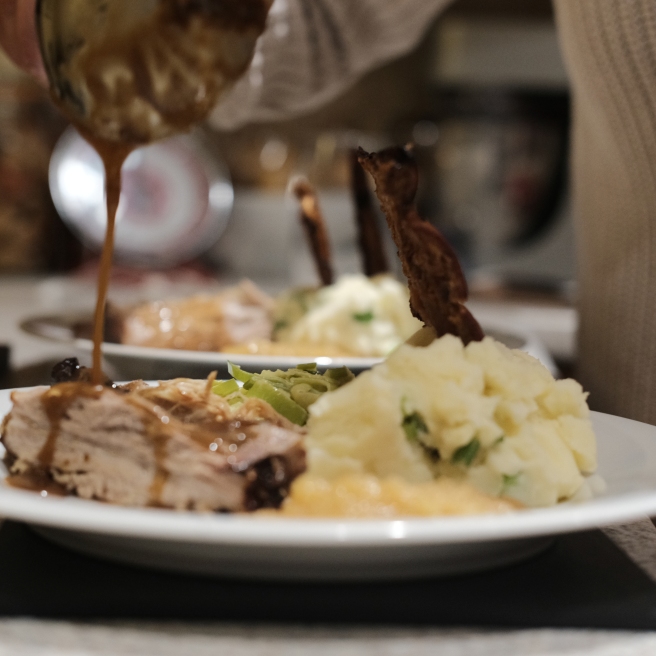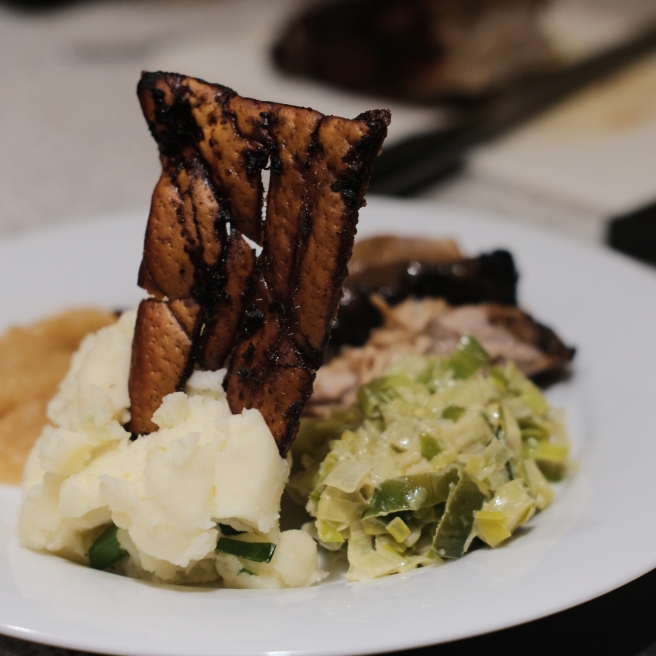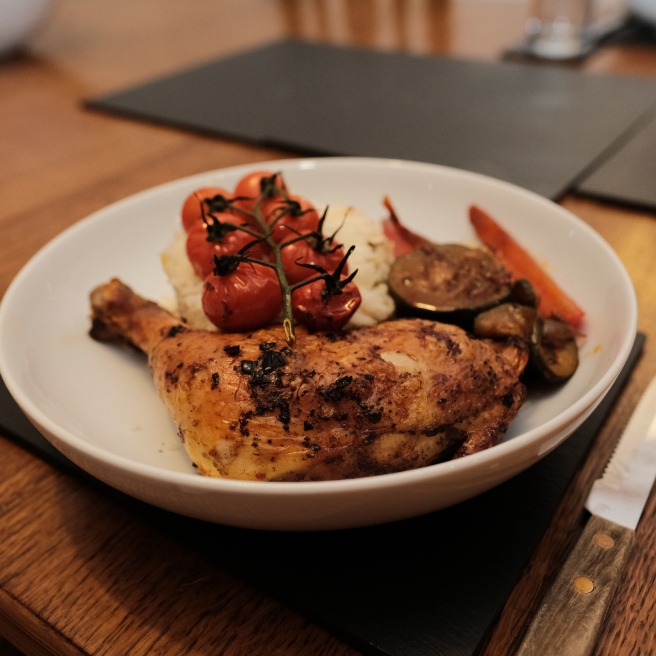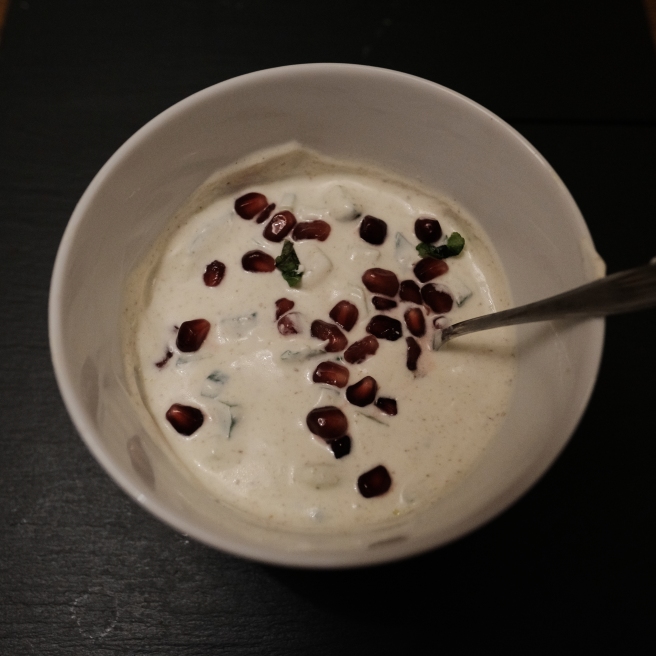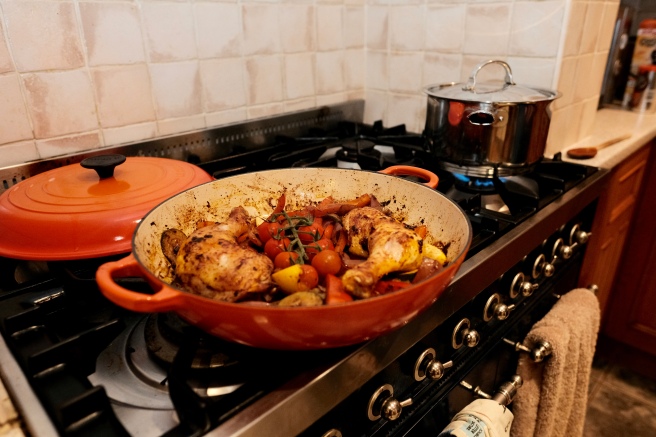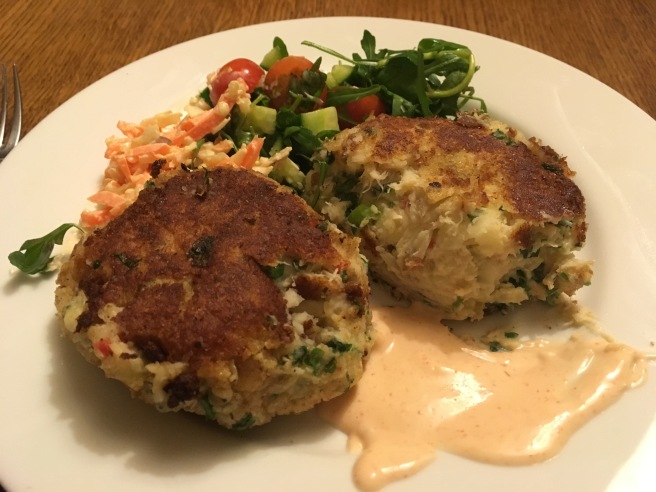
I had some leftover champ (Northern Ireland’s version of colcannon – mashed potato with spring onions instead of cabbage) from Sunday’s pork belly dish and some homemade coleslaw from the pork sandwiches I made the next day to use up, so on Tuesday I decided to try my hand at crab cakes! I’ve tried making fish cakes with freshly-made mashed potatoes before and they have just fallen apart in the pan. These crab cakes worked out really nicely though – I think the starch probably builds up in cold mash, meaning that they stick together a lot better.
The mix was very much a combination of things we had in the fridge; you could use different herbs, or leave out the chilli, garlic and/or ginger if you prefer.
Ingredients (serves 2)
For the crab cakes:
Leftover mashed potato (I had about half the champ from the pork belly recipe, so probably 250g equivalent in raw potatoes)
228 g white crab meat (I used Ocean Finest, currently on offer in Morrison’s!)
1 red chilli, deseeded and finely chopped
Juice of 1/2 a lime
Zest of 1 lime
small bunch of parsley, finely chopped
2 spring onions, finely chopped (you could use 2 more if starting with plain mashed potato – mine had spring onions mixed through it already)
2-inch piece of fresh ginger, peeled and finely grated
2 garlic cloves, peeled and finely grated
2 eggs
150g breadcrumbs
For the Sriracha mayonnaise
2 tbsp mayonnaise
1 tbsp Sriracha
Juice of half a lime
Method
Couldn’t be any easier; simply put all of the crab cake ingredients in a bowl…
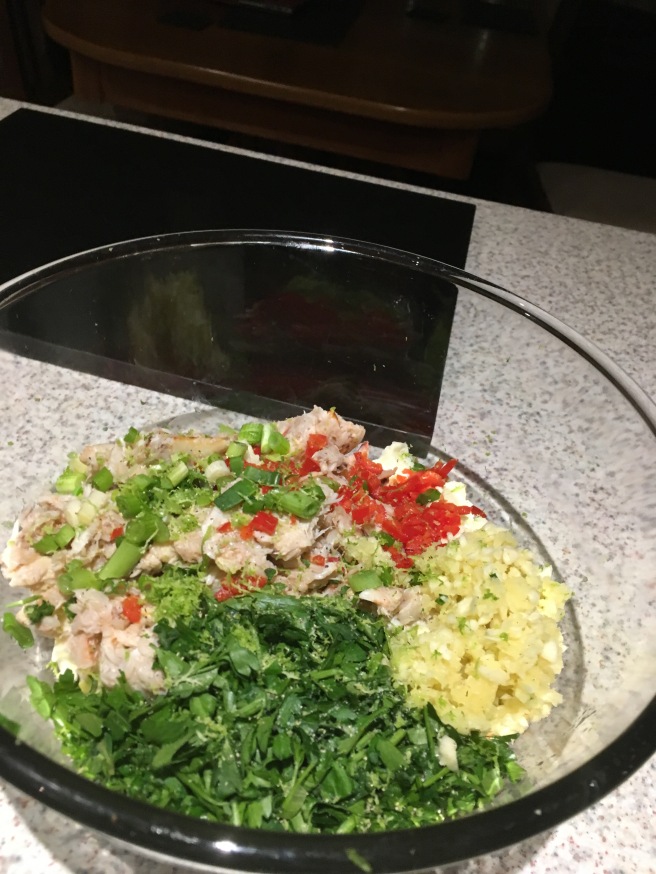
… and combine (you can see my sous chef, Gwen, in the background here if you look carefully!)
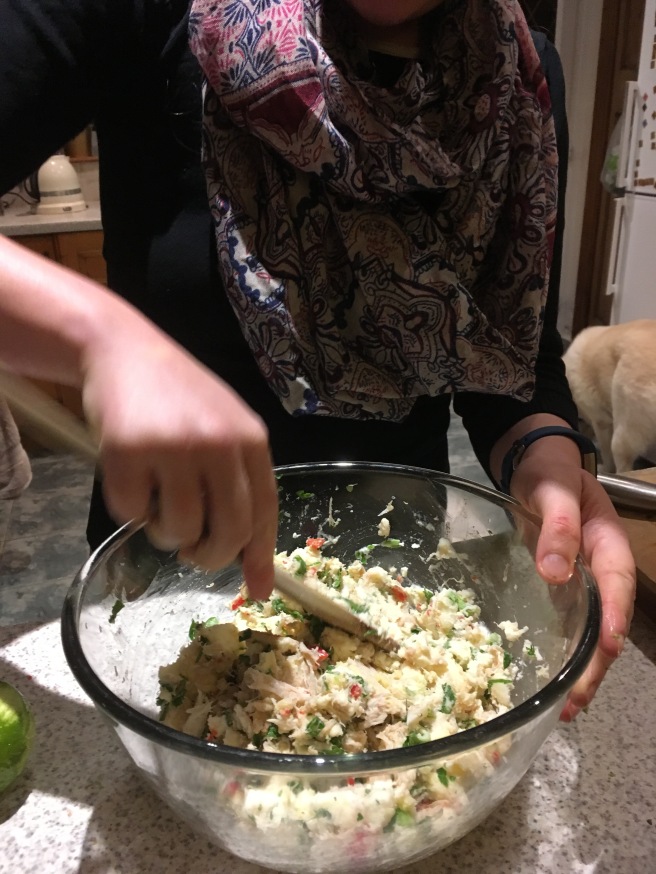
Shape the mix into patties (I used a mould for two of mine, which made two HUGE crab cakes, as you can see below! I would probably just do the old fashioned method of shaping them by hand in future)
 Pop these in the fridge while you make your salad (I just tossed some watercress, rocket, cucumber and tomato with a tablespoon of balsamic).
Pop these in the fridge while you make your salad (I just tossed some watercress, rocket, cucumber and tomato with a tablespoon of balsamic).
To make the Sriracha mayonnaise, simply combine all of the ingredients in a small bowl and set aside.
Beat the two eggs in a small bowl; mix the breadcrumbs with some salt and pepper in another small bowl. Heat a tablespoon of oil in a deep frying pan.
Dip each crab cake in the beaten egg, then the breadcrumbs, then into the pan, moving them around so that all of the breadcrumbs turn golden and the crab cakes heat through. When they’re done, pop them on a piece of kitchen roll before plating them up with your salad and sriracha mayo.
